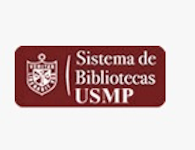Mostrar el registro sencillo del ítem
Macrosomía fetal en un hospital del Ministerio de Salud del Perú, de 2010 a 2014
| dc.contributor.author | Gutarra-Vilchez, Rosa | |
| dc.contributor.author | Conche-Prado, César | |
| dc.contributor.author | Mimbela-Otiniano, Josefina | |
| dc.contributor.author | Yavar-Geldres, Ingrid | |
| dc.date.accessioned | 2020-06-26T23:04:55Z | |
| dc.date.available | 2020-06-26T23:04:55Z | |
| dc.date.issued | 2018-08 | |
| dc.identifier.citation | Gutarra R., Conche C., Mimbela J., Yavar I. Macrosomía fetal en un hospital del Ministerio de Salud del Perú, de 2010 a 2014. Ginecol. obstet. Méx. 2018; 86(8): 530-538. | es_PE |
| dc.identifier.uri | https://hdl.handle.net/20.500.12727/6270 | |
| dc.description | ABSTRACT Objectives: To determine the prevalence of fetal macrosomia and its risk factors, and to describe complications in newborns. Materials and methods: Observational, cross-sectional and retrospective study carried out based on the information registered in the perinatal computer system of Hospital Vitarte. Single births, at term, attended between the months of January 2010 and December 2014 were included and newborns were excluded. For the univariate and bivariate statistical analysis, X 2 and Student's t were used for p < 0.05 and bivariate and multivariate logistic regression for odds ratio with 95% CI; the SPSS 23 program was used. Results: The study sample was 16,060 newborns and the prevalence of fetal macrosomia was 8.1% (1298 of 16,060) with 95%CI of 8,075-8,086%. The risk factors identified for fetal macrosomia were: obesity (OR: 2,762; CI95%: 2,370- 3,220), post-term (OR: 2,818; CI95%: 1,201-1,615), overweight (OR: 1,806; CI95%: 1,552-2,102). Multiparity (OR: 1,393; 95%CI: 1,201-1,615) and male sex (OR: 1,556; CI95%: 1,382-1,752). In relation to the complications, it was found that the Apgar low to the minute and the caesarean section were more frequent in macrosomic than in non-macrosomic ones. Conclusions: The prevalence of fetal macrosomia in Hospital Vitarte is found in the world average; Its main risk factors are modifiable, and the complications are preventable. It is suggested to improve gestational and pre-gestational interventions to achieve efficiency and repercussions in the prevention of fetal macrosomia. | es_PE |
| dc.description.abstract | Objetivos: Determinar la prevalencia de macrosomía fetal y sus factores de riesgo, y describir las complicaciones en los recién nacidos. Materiales y métodos: Estudio observacional, transversal y retrospectivo efectuado con base en la información registrada en el sistema informático perinatal del Hospital Vitarte. Se incluyeron los nacimientos únicos, a término, atendidos entre los meses de enero de 2010 a diciembre de 2014 y se excluyó a los recién nacidos óbitos. Para el análisis estadístico univariado y bivariado se utilizó X 2 y t de Student para p < 0.05 y regresión logística bivariada y multivariada para razón de momios con IC95%; se utilizó el programa SPSS 23. Resultados: La muestra de estudio fue de 16,060 recién nacidos y la prevalencia de macrosomía fetal de 8.1% (1298 de 16,060) con IC95% de 8.075-8.086%. Los factores de riesgo identificados para macrosomía fetal fueron: obesidad (RM: 2.762; IC95%: 2.370-3.220), postérmino (RM: 2.818; IC95%: 1.201-1.615), sobrepeso (RM: 1.806; IC95%: 1.552-2.102), multiparidad (RM: 1.393; IC95%: 1.201-1.615) y sexo masculino (RM: 1.556, IC95%: 1.382-1.752). En relación con las complicaciones se encontró que el Apgar bajo al minuto y la cesárea fueron más frecuentes en macrosómicos que en no macrosómicos. Conclusiones: La prevalencia de macrosomía fetal en el Hospital Vitarte se encuentra en el promedio mundial; sus principales factores de riesgo son modificables y las complicaciones son prevenibles. Se sugiere mejorar las intervenciones gestacionales y pregestacionales para lograr eficiencia y repercusiones en la prevención de macrosomía fetal. | es_PE |
| dc.format.extent | pp. 530-538 | es_PE |
| dc.language.iso | spa | es_PE |
| dc.publisher | Edición y Farmacia, S.A. de C.V. | es_PE |
| dc.relation.ispartof | urn:issn:1561-3011 | |
| dc.relation.ispartofseries | Ginecología y obstetricia de México;vol. 86, no. 8 | |
| dc.relation.uri | http://ref.scielo.org/7zhtsx | es_PE |
| dc.relation.uri | http://dx.doi.org/10.24245/gom.v86i8.1914 | es_PE |
| dc.rights | info:eu-repo/semantics/openAccess | es_PE |
| dc.rights.uri | https://creativecommons.org/licenses/by-nc/4.0/ | es_PE |
| dc.source | Repositorio Académico USMP | es_PE |
| dc.source | Universidad San Martín de Porres - USMP | es_PE |
| dc.subject | Macrosomía fetal | es_PE |
| dc.subject | Prevalencia | es_PE |
| dc.subject | Factores de riesgo | es_PE |
| dc.subject | Paridad | es_PE |
| dc.subject | Obesidad | es_PE |
| dc.subject | Sobrepeso | es_PE |
| dc.title | Macrosomía fetal en un hospital del Ministerio de Salud del Perú, de 2010 a 2014 | es_PE |
| dc.title.alternative | Fetal macrosomy in a Hospital of the Ministry of Health, Peru, from 2010 to 2014 | es_PE |
| dc.type | info:eu-repo/semantics/article | es_PE |
| thesis.degree.name | Medicina Humana | es_PE |
| thesis.degree.grantor | Universidad de San Martín de Porres. Facultad de Medicina Humana | es_PE |
| thesis.degree.discipline | Medicina | es_PE |
| dc.subject.ocde | https://purl.org/pe-repo/ocde/ford#3.02.00 | es_PE |
Ficheros en el ítem
Este ítem aparece en la(s) siguiente(s) colección(es)
-
Artículos [274]








